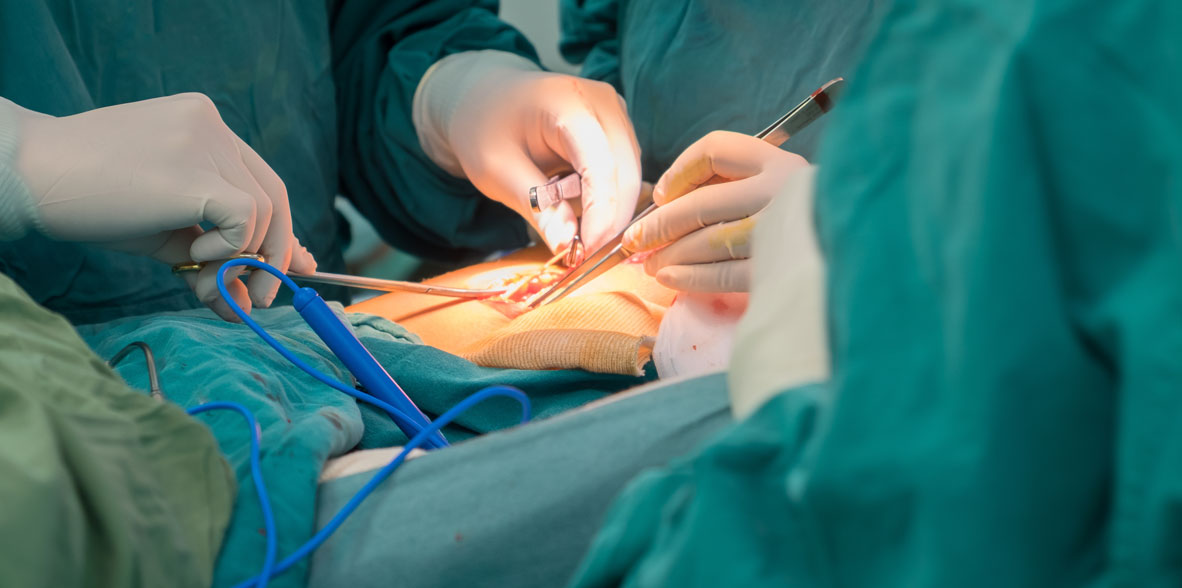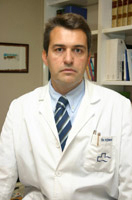

 Centro Médico Teknonen/health-centers/centro-medico-teknon
Centro Médico Teknonen/health-centers/centro-medico-teknon
What is it?
The mixed tumor or pleomorphic adenoma is applied to all tumors of the salivary and skin glands containing mesenchymal epithelial elements. 90% of cases are mainly located in the parotid; 7%, in the submaxillary gland and palatine vault; 1% in the sublingual glands and the remaining 2-3% in the accessory, sweat and lacrimal glands, having been described in order of frequency in jugal mucosa, neck, lips, cheeks, eyelids, etc.
The cutaneous localization takes the form of subcutaneous or infrared nodules of firm consistency, well delimited, smooth or lobly surface, not adhered to the superficial or deep and mobile planes and although they can settle anywhere on the body, they do so mainly on the face, head and neck. Subjectively they are asymptomatic and the discomfort they cause is due to their size.
These tumors have their origin in the sweat glands and derive from the epithelial and myoepithelial cells of these organs and by their histopathological appearance resemble salivary glands.
The mixed parotid tumor is a relatively frequent lesion, of solid or rubbery consistency that is located preauricular or subauricular, is slow growing, not painful, and does not produce facial paresis. The lesion can form anywhere in the parotid, usually in the superficial lobe, sometimes affecting the deepest portion of the gland and the tumor can enter through the stylomaxillary tunnel and enter the parapharyngeal space. In the submaxillary gland the mixed tumor presents as a painless swelling and palpation of a firm lump is more frequent in the outer portion of the gland. Mixed tumors are benign although there are two malignant variants, carcinoma ex pleomorphic adenoma (where the epithelial component usually causes undifferentiated carcinoma) and true malignant mixed tumor.
The capsule of mixed benign tumors varies greatly in thickness and continuity. There may be tumor cells on the surface or arranged as outgrowths outside the capsule. This multicentric proliferation imposes a wide surgical excision that includes the normal gland.
The clinical diagnosis is completed with the aspiration puncture that gives us the diagnosis and the computerized axial tomography that defines its extension and neighborly relations. The treatment is surgical and always requires a parathyroidectomy-type approach, identifying the facial nerve at its exit from the stylomastoid foramen, following it to its terminal branches, if the lesion is limited to the superficial lobe, a suprafacial or superficial lobe parotidectomy is performed, but if the tumor affects the deep lobe, we will require total parotidectomy, always having to respect the facial nerve. The lesion that affects the submaxillary gland must be cleaved in its entirety including the tumor preserving the mandibular branch of the facial. The recurrence of these lesions is usually due to insufficient resection, and must include in the second wide margins of tissue, to prevent additional recurrences, in these patients it may be inevitable to sacrifice branches of the facial nerve, in certain cases suture or nerve graft is indicated.
 Parotid Pleomorphic Adenoma, we clearly observe the normal parotid parenchyma and the mixed tumor (white) that bulges in the subcutaneous
Parotid Pleomorphic Adenoma, we clearly observe the normal parotid parenchyma and the mixed tumor (white) that bulges in the subcutaneous
- Congenital parotid cyst
Congenital parotid cysts can appear in infancy or at older ages. They are characterized by dilation of the main canalicular system and formation of multilocular cystic areas. Its extension can be recognized broadly to inspection and palpation, we can indicate sialography, if the ducts are permeable and communicate with the cysts, the contrast medium delineates the cystic spaces, although the computerized axial tomography will reveal the cystic character of the lesion. At first there is clear saliva trapped if there is no infection. Over time there is a risk of chronic infection, with surgical excision with facial preservation being the appropriate treatment.



































